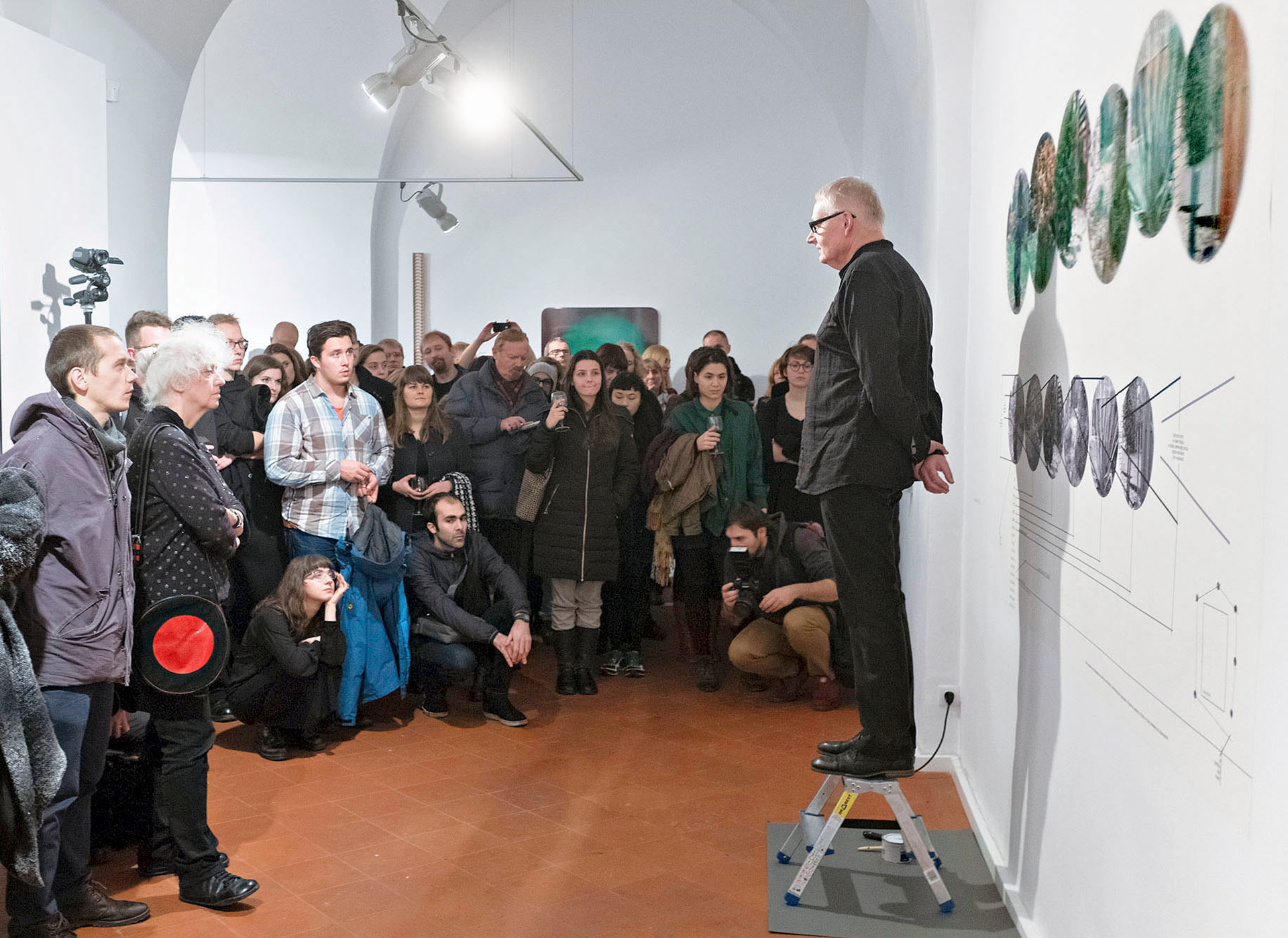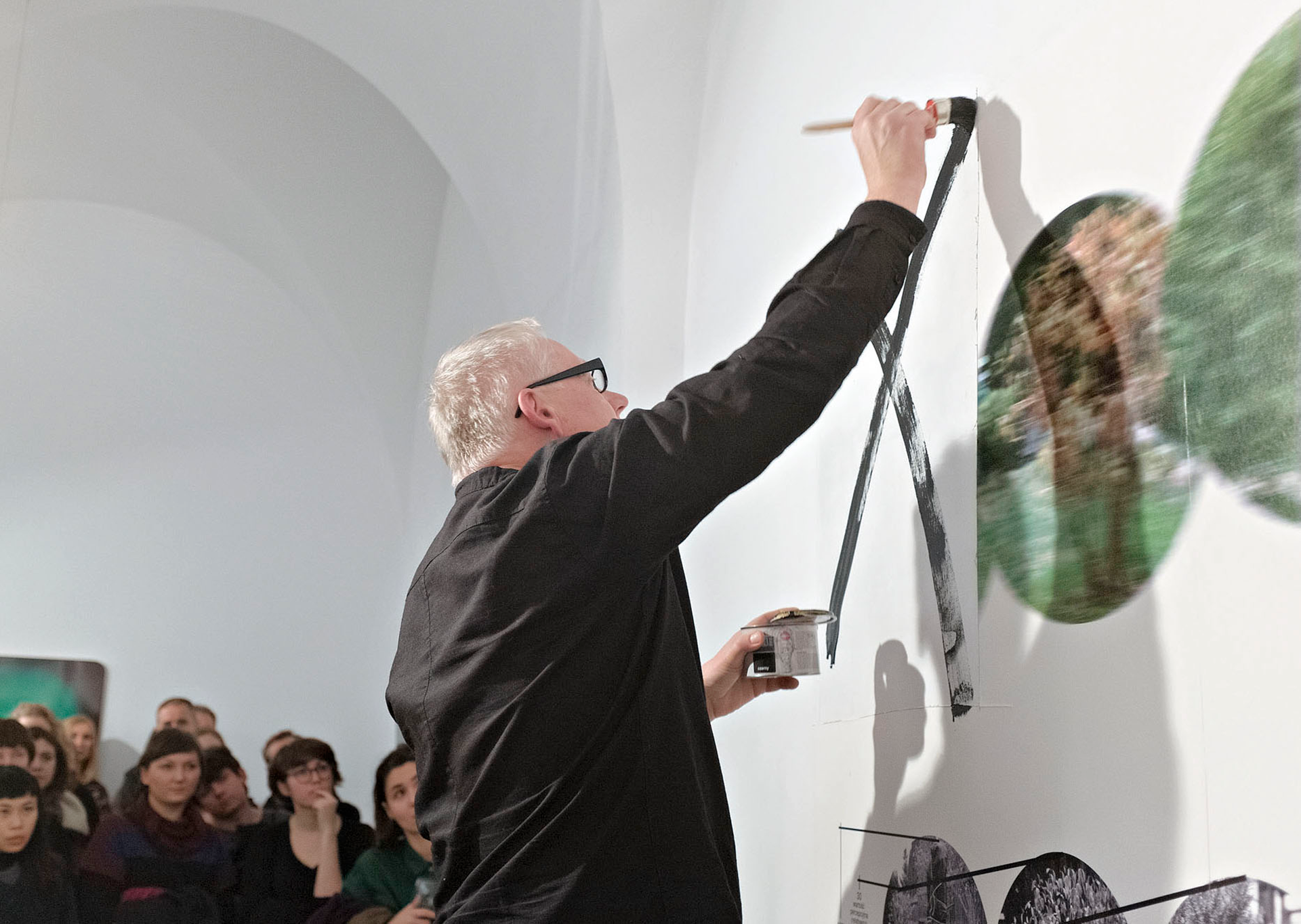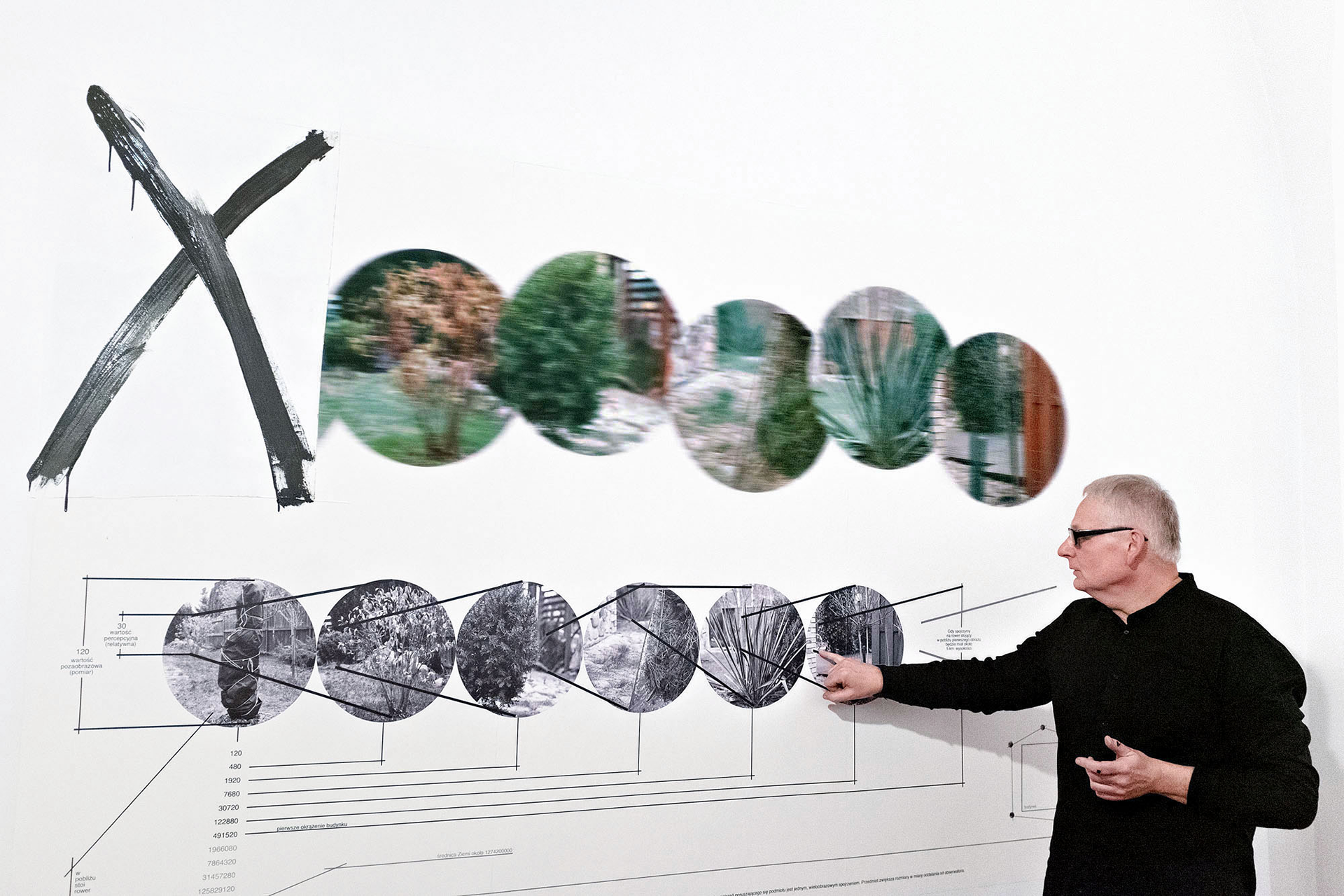Blow Up
performance, 2014
Text delivered during the performance Blow Up at Galeria Piekary in Poznań, 12 December 2014 at 7.30 pm (Fig. 1).
Figure 1
You will witness the launch of a certain device – it is of a speculative nature and is used to enlarge objects. The device uses the effect of combining and interpenetrating images (Fig. 2).
Speculation is based on two premises. Premise one: a series of gazes by a moving subject forms a composite gaze made of multiple images. The concept of movement should be understood broadly and loosely – from the movement of the eyeball to a journey into space. It is the paths of gazes that determine the routes of transitive images. Premise two: objects increase in size as the observer moves away. We should enlarge objects to compensate for the common illusion of their constant reduction. All common-sense exhortations that objects are as they are are useless here – and we forget them anyway. Balance must be established by the principle: smaller in illusion – larger in thought. The device will initially deal with one of the types of movement that is closest to us: walking or more precisely – circling a selected object – such as walking around a building (Fig. 3).
Figure 3
Numerous objects of constantly changing shapes and sizes appear within my range of vision – one of them is a bicycle (Fig. 4).
Figure 4
My circling sharpens the impression of everything being divided into individual images filled with objects repeated in different sizes. So far, we are stuck in the illusion of separate individual glances and objects shrinking into infinite smallness. To control the process, we will need two starting points: 120 and 30 (Fig. 5).
Figure 5
These are the simplest empirical measurements corresponding to the principle of reducing objects. I reverse its operation. Now I can give up on the first image – I eliminate it and mark the place where it was with black paint (Fig. 6), (Fig. 7), (Fig. 8).
Figure 6
Figure 7
Figure 8
The temptation to direct the activated device to non-speculative areas of experience should be eliminated – we put thinking ahead of the illusion of obviousness. Further actions can be left to the device itself. I will only demonstrate the process that is taking place here:
480 (marking the spot of the image with black paint) 1920 (marking the spot of the image with black paint) 7680 (marking the spot of the image with black paint) 30720 (marking the spot of the image with black paint) 122880 (marking the spot of the image with black paint).
During the calculations, the temptation arises to translate this experience into understanding images according to a fixed pattern may reappear. We then direct our attention to one of the objects noticed during the walk. The bicycle standing nearby has reached impressive dimensions. The second time around the building its height exceeded the diameter of the globe (Fig. 9).
Figure 9
The practice of concentrating attention and organizing meanings in relation to transitive images requires long and regular exercises.









